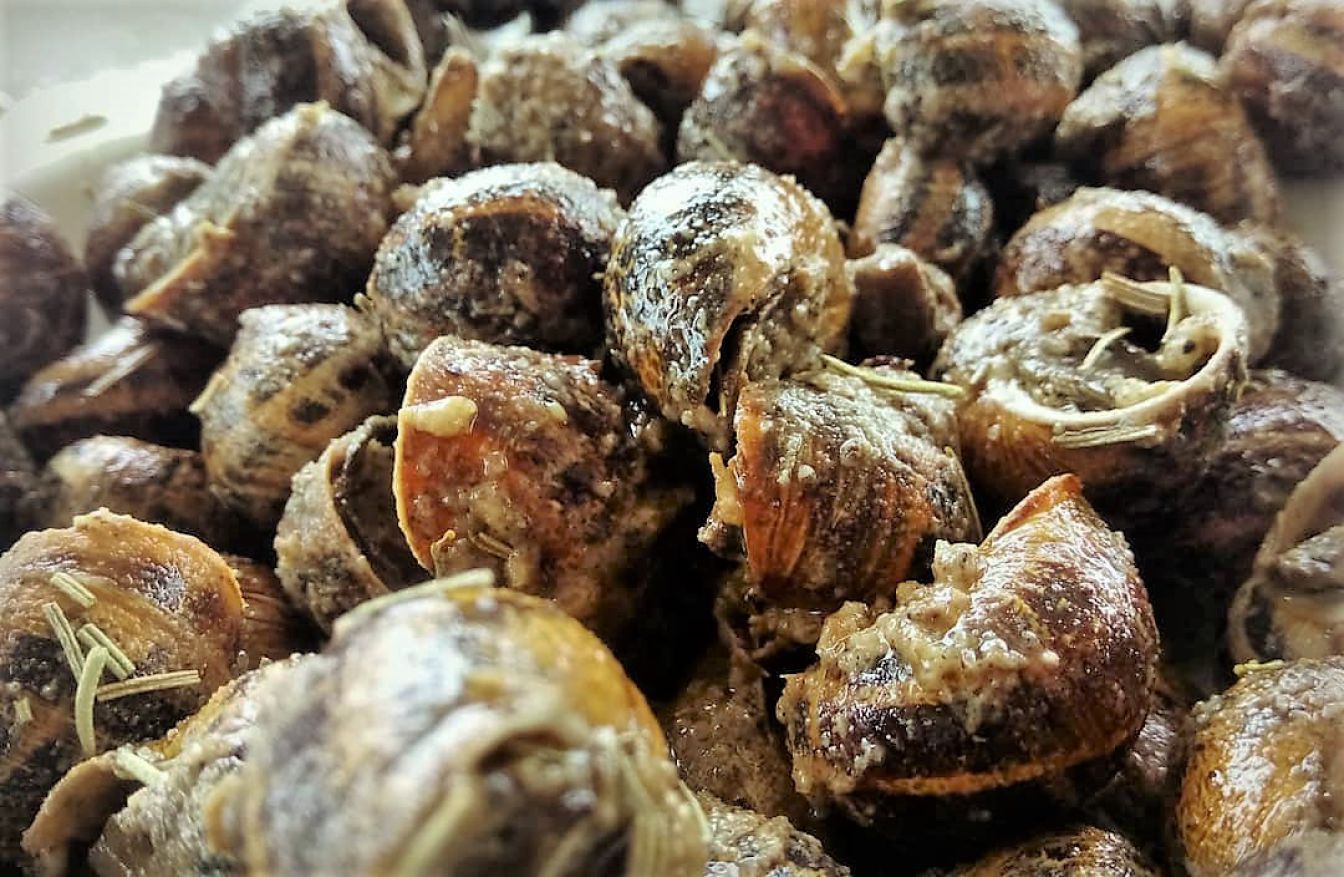Its nutritional value dates back to references in ancient Greece, where they were included in their diet and even in medicine; Hippocrates mentioned using snail mucous for cell regeneration. In our times, snails have gained significant popularity among health-conscious groups and diets due to their protein-rich, low-fat, low-calorie content, and their richness in omega-3 and omega-6 fatty acids. They can also be consumed during fasting periods.
It's no coincidence that they hold a prominent place in restaurants worldwide and are favored by top chefs. There are many snail varieties, of which 3-4 are typically consumed. In Greece, we usually encounter the Cretan snails, known for their fullness and tenderness.
Preparation is essential before cooking. Many cleaning methods exist (fasting). Some people place them in flour for 2-3 days, in rice, pasta, or even in bran. It's crucial to understand that to clean the snail, we need to follow its natural process. When the snail senses a drop in atmospheric humidity, it expels its inner contents and secretes a calcium-based substance that seals its shell to preserve its moisture. Sealed snails are safe to consume as they have expelled their internal substances. Alternatively, we can place them in a well-ventilated area away from sunlight and light for 3-4 days for this natural process to occur.
How can we distinguish if a snail has undergone this cleaning process when dining at a restaurant? A snail consists of two parts: the fillet and the tail. The snail's tail (which we pull out when eating) is the storage area for its waste. If we taste it and it's bitter, it means the snail hasn't undergone the cleaning (fasting) process and may contain health risks due to neglecting its origin (wild, agricultural, etc.).
After they are cleaned (fasted), we need to wash and blanch them for 3-4 minutes. This sudden demise, widely practiced abroad, ensures a more dignified death. It also helps us cook them faster and allows us to freeze them if desired for later use.
In Greece, you'll find them prepared live in the pan ('Boumpouristoi') with salt and rosemary or in 'stifado'."
(Note: The term "Boumpouristoi" refers to the snails being cooked with their shells sealed, resulting in a popping sound when they're opened in the pan.)
LATEST RECIPES
GET LATEST UPDATES
Newsletter Subscribe
FEATURED ARTICLE

GET LATEST UPDATES
Newsletter Subscribe






















































































